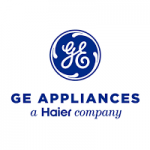Tech Bulletin #9: Recommendations for Building Water System Safety During Post COVID19 Shutdown Reopening Phase
As the COVID-19 pandemic spread across the country, how we operated retail, entertainment, commercial, institutional, and hospitality facilities rapidly changed. As the need for social distancing increased and shelter in place orders were put into place, our facilities immediately saw a decreased demand for HVAC and potable water system use. This created an immediate concern for both accelerated corrosion in HVAC systems and legionella, the waterborne bacteria responsible for Legionnaire’s Disease. Ideally action was taken during the shutdown to mitigate these concerns. Now, as we eye reopening, action must be taken to continue, verify, and validate those efforts to ensure proper water safety and quality. We have prepared the following checklist and recommendations to ensure a smooth and safe return to normal operating conditions.
If not already in place, this is the time to develop a Water Management Program (WMP) for your facility.
CLICK HERE for GWT’s Printable PDF Check List
SYSTEM INVENTORY ANALYSIS
- Review Flow Diagram to verify that it is up to date – identify both HOT and COLD water risers.
- Review Critical Control Points (CCP) and Control Measures to verify they are up to date.
- Conduct an inspection of the facility plumbing to ensure it is functioning properly.
HVAC/NON-POTABLE WATER CONSIDERATIONS
- Cooling tower water must not sit idle. Recirculate water and add biocide daily.
- Rotate cooling tower water recirculating pumps weekly to avoid stagnation and dead legs.
- Check inventory of any necessary chemistry & testing reagents (towers, boilers, loops, etc.). We currently recommend a 6-8 week supply with a 4 week inventory re-order point.
- Schedule cooling tower and chiller cleaning as soon as possible.
- Schedule cleaning of water features, spas/hot tubs, emergency eyewash and shower stations. Follow manufacturer disinfection procedures.
- Change all filters on closed loops.
DOMESTIC/POTABLE WATER CONSIDERATIONS
- Prior to re-occupancy, all buildings should be on high alert for Legionella as decreased water usage will create temporary dead legs. Flushing of both the HOT and COLD water systems will be needed to re-introduce fresh potable water. Start at the lowest level of the building and proceed upward. For assistance with flushing and testing, discuss with your GWT representative additional labor help. All flushes must be documented.
- Flush cold water as close to the point of entry (POE) for at least 10 minutes (3.0 fps for proper flow).
- At the POE sample point, test for temperature, along with FREE or TOTAL Chlorine, depending upon the disinfectant used by your municipality. If there are discrepancies contact GWT and your local municipal water provider. Document that the domestic water analysis shows the proper level of disinfectant.
- Per the CDC, maintain the hot water system at a temperature of at least 140 Degrees F. Any hot water heaters taken off-line must have a pasteurization procedure conducted before start up.
- Check all mixing valves for proper operation. Document compliance with temperature regulations.
- Check hot water return pumps for proper operation, and flush each return for at least 1 hour.
- Flush both the hot and cold water fixtures in all areas, including janitor closets, kitchen sinks, utility faucets, etc., for at least 10 minutes. Record temperature and disinfectant levels. Initially this is to be conducted at least once per week.
- Change out all Point of Use filters (ice machines, coffee machines, etc.).
- Clean all ice machines per manufacturer’s recommendations.
- Compare distal site chlorine and temperature levels with the incoming water source
GENERAL CONSIDERATIONS
- Validate the effectiveness of the above procedures by collecting water samples for Legionella and HPC analysis.
- Discuss the results with the full Water Management Team and refer to the Water Management Plan if additional actions are required.
- All steps must be documented with the results stored in the Water Management Program manual.
GWT recommends that every facility comply with ANSI/ASHRAE Standard 188 and have a Water Management Program. A properly modeled plan should account for many of these proactive.
For additional information, please reach out to one of our representatives at 708-349-9991 or info@gwt-inc.com






